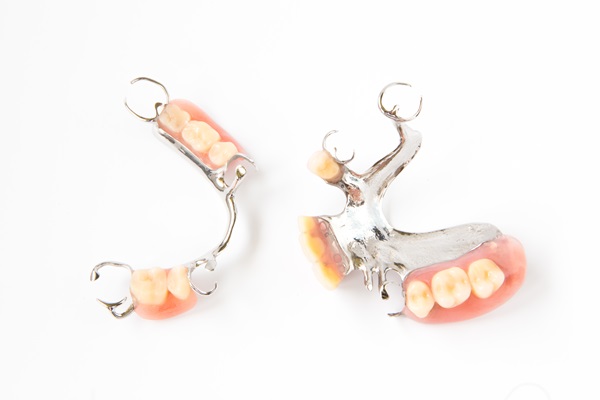5 Common Oral Surgery Procedures

More than 10 million people receive oral surgery every year. There is a range of dental procedures that require surgery that spans from common procedures that most people have to uncommon ones saved for special circumstances.
Common dental procedures
There are several common dental procedures that people may undergo when visiting their dental professional.
1. Bone grafting
If a patient loses an adult tooth but does not make any move to have a replacement put in, the jawbone under the empty spot will begin to weaken. Over time, the body will even reabsorb it. If the patient does decide to get a replacement tooth made after the time has passed, the bone will likely not be strong enough to support it. If the bone cannot support the new tooth, the patient will need to undergo a bone grafting procedure.
Typically, the healthy bone will be taken from another part of the jaw. The graft will need to heal before the replacement tooth can be placed. Sometimes, a platelet-rich plasma will be combined with the graft. Taken from the patient's blood, it is used to promote better tissue regeneration and healing.
2. Corrective jaw surgeries
A misaligned jaw makes it harder for a person to eat and speak properly. Even breathing properly can become more difficult. There are several types of corrective jaw surgeries that fix a number of problems. Common ones include bite adjustments, which change how teeth fit together when the mouth is closed, or corrections that affect facial symmetry. Corrective jaw surgeries may also ease pain related to the temporomandibular joint disorder, repair injuries, repair cleft palates, and more.
Most corrective jaw surgeries are performed in the late teens or early 20s after the jaw has stopped growing. The procedure typically includes an incision made into the upper gums to access the jaw and make any necessary changes. Plates or screws keep the jaw in its new position, and stitches are used to enclose the gum after the procedure.
3. Dental implants
Denta implants are a common type of oral surgery. Dental implants are similar to dentures in that they replace missing teeth. Unlike dentures, though, implants are permanent and not removable. Dental implant procedures require several steps that often span months. First, any remaining broken teeth that are going to be replaced need to be removed. Once that heals, dental impressions are made. If any bone grafting needs to be done, it will be done after the impressions.
After the grafts heal, the titanium screws that will hold the teeth in place are inserted into the gums. These take several weeks to heal. Once healed, the abutments, which connect the false teeth to the screws, are placed. Sometimes, additional healing time is necessary. Finally, the replacement teeth are placed on the abutments. Once healed, the patient has a natural smile that, if taken care of properly, will last for the rest of his or her life.
4. Mouth and facial trauma
Even people who have good overall oral health may need a dental surgery procedure at some point in life due to unexpected mouth or facial trauma. This can happen for several reasons. A high school sports star may experience a severe injury during practice or a game. Someone may take a tumble down the stairs and receive trauma to the face. One of the most common culprits of mouth or facial trauma is car accidents. The type of procedure necessary will depend on what trauma was experienced, how it occurred, and where the injuries were sustained.
5. Wisdom tooth removal
Perhaps the most common dental procedure is the extraction of wisdom teeth. The average adult mouth does not have enough room to accommodate the two extra teeth that grow into the back of the mouth, which means most people will need to have them removed to relieve pressure and discomfort. Someone who does not have room for them will experience impaction, which causes pain and may even lead to infection or other dental problems. Typically, people who are between the ages of 17 and 25 have their wisdom teeth removed.
During the procedure, an incision is made in the gum tissue to expose the affected tooth and bone. From there, the bone that blocks access to the tooth's root is removed, then the tooth is divided into sections for easier removal. After the tooth is removed, the site is cleansed of any debris and the wound is closed with stitches.
Conclusion
People who think that they may need an oral surgery procedure should speak to their dental professional about their concerns. Doing so ensures they receive excellent care.
Request an appointment here: https://sandimassedation.com or call San Dimas Family and Sedation Dentistry at (909) 305-2300 for an appointment in our San Dimas office.
Check out what others are saying about our dental services on Yelp: Oral Surgery in San Dimas, CA.
Recent Posts
Dentists use oral surgery to help restore your oral health. You might be wondering if the symptoms you have are signs you might need oral surgery. Some symptoms are a great indicator of the need for surgical attention. However, other symptoms might not be obvious to you. Your dentist can evaluate you and determine if…
Oral surgery is often required to address dental health issues. Oral surgeries might be performed by different types of dentists, including general dentists. But sometimes, a general dentist refers patients to an oral surgeon for issues such as complex extractions. Keep reading to find out when your dentist might recommend oral surgery.Oral surgery is often…
Today, with increasing importance placed on dental aesthetics, there are many reasons why one may consider a trip to the cosmetic dentist. The desire for good-looking teeth is important as beautiful smiles are known to contribute to a person's overall well-being and positive self-image. There are many different avenues for fixing an imperfect smile. In…
An article by GlaxoSmithKline Consumer Healthcare states that more than 18 million people wear partial dentures. Anyone who has been considering getting partials to improve their speech, ability to chew, and even their appearance is not alone. It helps to have the proper information beforehand, though. Partials are created from a wide variety of materials, each…


